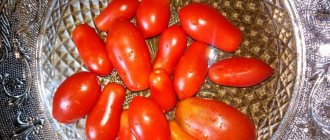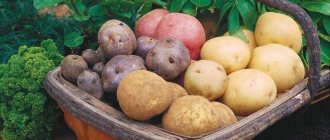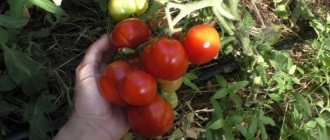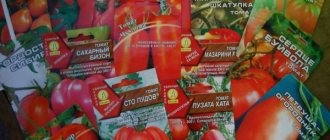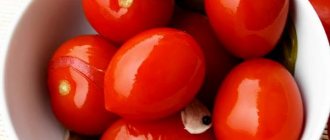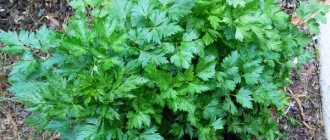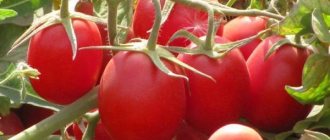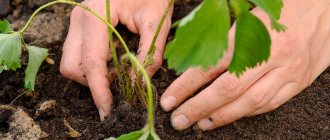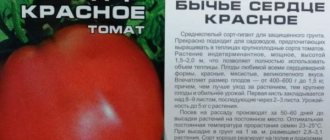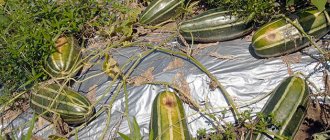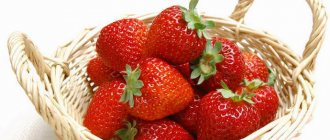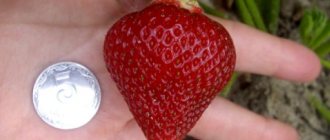Advantages and disadvantages of the beardless berry plant
Based on the type species, breeders developed remontant strawberries. Its distinctive characteristic is the ability to produce crops several times per season. The formation of fruit buds takes place during daylight hours, lasting from 6 hours. Remontant strawberries were taken as the basis for obtaining beardless orts.
The berry plant has many advantages:
- high productivity rate;
- undemanding conditions for growth, fruit formation and yield;
- excellent taste of berries;
- wide range of varieties;
- allocation of large areas for setting up berry gardens.
Bareless strawberries have much fewer disadvantages. Gardeners highlight the need for frequent planting and difficulty in propagation. When grown in the southern regions, another drawback appears - poor tolerance of some berry varieties to high air temperatures.
Varieties in demand among gardeners
Choosing A big role is played by the exactingness of a certain variety to the attention of the gardener, how often he can feed the berry garden, loosen the soil, and irrigate the beds. Depending on taste preferences and the availability of time for care, gardeners identify a number of interesting varieties of berries. All of them are without mustaches.
"Ali Baba"
The result of the work of a Dutch breeder, which saw the light of day in 1996. The variety is represented by powerful, compact bushes about 15 cm high. In the first year, numerous inflorescences form on them. The berries, weighing 7 g, are covered with red skin, but the flesh is white. During the season, 500 fruits can be harvested from one plant. Although they are very tasty, they are not suitable for industrial production due to their poor shelf life and transportability.
"Renaissance"
A mid-early berry plant that has recently been added to the catalog of varieties. Brought out by German specialists in 2021. Plants are medium-sized with intense foliage. Spreading is weak. The flower stalks do not rise above the green leaf blades, but bend towards the ground.
The berries are heart-shaped. Aligned to size. The color of the thin skin is bright red. Due to the high concentration of aromatic substances, it has a very intense aroma, reminiscent of wild strawberries. The pulp is dense, the skin is medium elastic. Yellow achenes are sunk into the pulp.
"Cinderella"
Strongly growing and spreading bushes yield their harvest late (in July). But fruiting continues until frost. The bushes are formed by powerful shoots and large leaf plates, painted dark green. The peduncles are strong and can support the weight of fruits over 20 g. The arrangement of flowers is low.
If the average weight of berries is 20 g, then at the first harvest, larger specimens are also noted. The shape of the fruit is smoothly rounded, conical, without a neck. The pulp has a dense structure and a reddish color. The taste is bright with a sweet and sour aftertaste.
"Queen Elizabeth"
An early ripening day-neutral variety. On vigorous, semi-spreading specimens, erect flower stalks form early. When fully developed, they remain hidden under large foliage. The latter has characteristic jagged edges and a glossy sheen. The flowers are bisexual (without empty flowers), large, white, five-petaled or semi-double.
During the formation of the ovary, plants begin to actively waste energy, which negatively affects the formation of the ovary. This led to the classification of the variety as beardless. Productivity from an area of 1 m2 is 4.5 kg. Strawberries are resistant to the development of fungal diseases.
Attention! Under favorable weather conditions, it is possible to get the first harvest from the bushes in late spring.
"Forest Tale"
High-yielding dessert strawberries. It blooms early and enters the fruiting phase in early summer. Medium-height bushes reach a height of 20-25 cm. They are formed by rosettes of large, wrinkled leaves. Peduncles grow level with them. The type of development is bouquet. The bright red fruits are small. Weight - 4 g. But the small fruit does not affect the taste: it is amazing. The purpose is universal: suitable for both fresh consumption and canning.
Features of cultivation
Varieties that repeat fruiting have a completely different growth cycle and yield than traditional strawberries. Their flowering time continues throughout the entire growing season, the leaf mass grows intensively. If such strawberries are not regularly fed with chicken droppings and mineral fertilizers, they quickly degenerate, wasting their energy on repeated fruiting and the formation of a large number of aerial layering.
Soil requirements
Remontant strawberries grow better in slightly acidic and neutral soils. Wetlands with high groundwater levels and acidic heavy soils are not suitable. To ensure air access to the roots during the period of growth of leaf rosettes, the soil around the bushes must be periodically loosened, and mulched during the flowering and fruiting period.
Features of cultivation
If the planting material does not grow leaves well in the first season, do not allow flowering, pluck out the flower stalks until the bushes gain strength. Otherwise, the harvest will be small and the plants will be weak.
Only properly developed, well-formed bushes are allowed to bear fruit. Next year, you can grow early strawberries from this plantation, leaving the first ovaries for fruiting.
It is important! Remontant strawberries need frequent renewal, since the soil depletes all its strength and resources due to the continuous formation of fruits. Plant new beds for next year at the end of summer, after garlic, onions, carrots, beets, and mustard greens.
In the first half of the season, remove all tendrils so that the plants direct all their energy to producing fruits. Delaying this procedure may cause adverse effects, delaying fruiting and producing more flowers.
In the second half of the season, remove excess leaves, especially old, damaged, excess leaves. Leave 2 tendrils on several bushes to provide yourself with planting material.
Attention! Remontant varieties not only bloom and bear fruit all the time, but also grow quickly. Therefore, old and damaged leaves are removed, which will help keep the plants in better condition.
Repeat-fruiting varieties have a completely different growth and productivity cycle than traditional strawberries. Flower buds form in these varieties during the growing season. After planting, you need to prevent the first flowering by removing the first flowers, and sometimes the subsequent ones. The decision to remove the second inflorescence from a remontant plant is made depending on the condition of the bushes - when they are strong and properly developed, they can be allowed to bear fruit.
Important in the fight against diseases and pests is the destruction of weeds around planted plants, provocative planting of insect-attractive or insect-repellent crops. The pest often prefers alfalfa and is afraid of calendula and garlic.
Varieties of small-fruited strawberries
There are many varieties that produce smaller berries. As a rule, they have denser flesh and last longer fresh. They are more suitable for preservation, maintaining their shape. When growing, they require compliance with the same rules as any other strawberry.
"Rhine Waltz"
Early strawberries of Swiss selection. Bush strawberries are easy to care for due to their undemanding nature. She has excellent immunity to specialized strawberry diseases. Winter hardiness is average.
Small fruits are colored red. Weighs 4 g. The pulp is dense. The harvest tastes great and is transportable. The fruits make excellent jam, the taste incomparable to jam from large-fruited varieties.
"Rügen"
Although the garden strawberry variety was developed a long time ago, it continues to win the hearts of gardeners. Strawberries were bred on German lands near the castle of the same name at the beginning of the last century. Compact bushes are semi-spreading and form almost balls. The height of the plant does not exceed 18 cm. The peduncles are erect and very strong, located flush with the leaves.
The intense green foliage has a distinct ruffled appearance. The sizes are average. The berries are small, conical in shape without a neck. Length - 2-3 cm, in the thickened part - about 1.2-2 cm. Mass of shiny fruits, painted bright red - 2-2.5 g.
"Ruyana"
Strawberries were bred in Czech fields in 1954. The variety is characterized by average ripening time, relative resistance to harmful organisms and stable yield. Compact bushes are hemispherical. The plant does not form rosettes.
Peduncles rise above the green leaves with characteristic wrinkles. Red berries are fragrant, conical in shape, small in size. The sweet taste is delicious by tasting. The skin is red, medium shiny. The achenes are not pressed into the pulp. The latter is pink, medium-bodied, with a strong aroma.
"Alexandria"
In 1964, the variety was introduced by the Park Seed Company. Plants that are not prone to the formation of whiskers can reach a height of 20 cm. The leaves are bright green, with a jagged edge, folded along the central vein. During flowering, small flowers with rounded petals painted white are noted.
The berries are small in size, without a neck, oblong-conical in shape, sharply pointed closer to the top. The average weight of the fruit is 8 g. The harvest is colored red. The skin is glossy. The seeds stand out well. The pulp is sweet, very aromatic, with a pronounced strawberry flavor. The purpose is universal: the harvested crop is suitable for fresh eating and for preparing jams and jellies.
"Yellow Miracle"
The variety is interesting for its color, which is indicated by the name of the strawberry. The berry plant is popular in the Urals because it is not afraid of temperature changes and is resistant to root rot caused by over-moistening of the soil due to uneven precipitation. The berry plant is suitable for growing in shaded areas: it is undemanding in terms of lighting levels.
The berries are small, but very aromatic and tasty. The purpose is universal. Against the background of green foliage, the crop is clearly visible, which simplifies its collection. Fruiting is extended.
When choosing the best variety of remontant strawberry, each gardener is guided by personal criteria. If the berry is grown for personal consumption, taste and the ability to harvest for the winter are important; if for sale, yield, presentation, shelf life, transportability are important; if the berry grows in the north, resistance to frost.
Varieties by region
The most important criterion for choosing strawberries is its ability to grow and bear fruit in specific climatic conditions.
The table shows the best varieties of strawberries adapted for the Moscow region, the Urals, and Siberia:
| Region | Beardless strawberry varieties |
| Moscow region | Garland, Alexandria, Yellow Miracle, Rügen, Rhine Waltz |
| Ural | Alexandria, Ruyana, Baron Solemacher, Rhine Waltz, Rügen, Yellow Miracle |
| Siberia | Rügen, Alexandria, Forest Tale |
For the Urals
The Urals are an area with a cold climate. But you can grow remontant strawberries here with the same success as in areas with a temperate climate. The most common varieties of strawberries include:
- Brighton . The plant has a powerful bush system. The berries are large in size, have a shiny surface, the weight of one fruit is 50 g. The variety is characterized by winter hardiness. Able to resist diseases and pests at the highest level.
- Elizabeth II . This variety allows you to obtain a continuous harvest, from spring to late autumn. The weight of one fruit reaches 50-100 g. The plant is capable of bearing fruit even during frosts.
- Irishka F1 . The variety in question is characterized by the formation of a large number of inflorescences. The color of the berries is dark red. The weight of one fruit is 18-25 g. The plant is not afraid of frosts down to -30 degrees, heat and waterlogging.
- Lizonka F1 . This variety has bright, pink flowers. The fruits can weigh 30-40 g. They are highly resistant to soaking and gray rot. Fruit ripening can occur even with constant rain.
- Lyubava . The weight of the berry reaches 35 g. The color is rich red, there is dense pulp.
In terms of frost resistance, this variety can compete with all foreign remontant varieties.
The video shows the best varieties of remontant strawberries:
FAQ
What varieties of strawberries are the most delicious? According to tasting estimates, varieties such as Ali Baba, Alexandria, Ruyana, Lesnaya Skazka, Rügen, and Baron Solemacher have high taste characteristics.
Is it possible to propagate hornless strawberries by dividing the bush? It is believed that hornless strawberry varieties can only be propagated by seeds. Some gardeners claim that they propagate their strawberries in a simpler way - by dividing the bush. This is not the best option, but if necessary, you can try to use it.
Reproduction by dividing the bush
The first method of dividing strawberries is to divide last year's young rhizome into separate parts. The upper bud is removed, the rhizome, already remaining, is cut into pieces.
The pieces themselves, located in moist, light soil, begin to germinate (after 10 days) and lead to the appearance of new plants. This situation is explained by the fact that last year this segment of the bush bore leaves, and in the axils of the leaves there are buds of the adventitious type, which just grow, forming new plants. They are quite weak at first, but can be strengthened by careful care or replanting.
The second method is to divide the apical type bud. For this method, the apical heart of the plant is used, then cut into slices. The remaining parts, planted in soil with the proper amount of moisture, give rise to new plants from the buds of the axil.
READ ALSO: Growing strawberries in a PVC pipe, technology and tips
